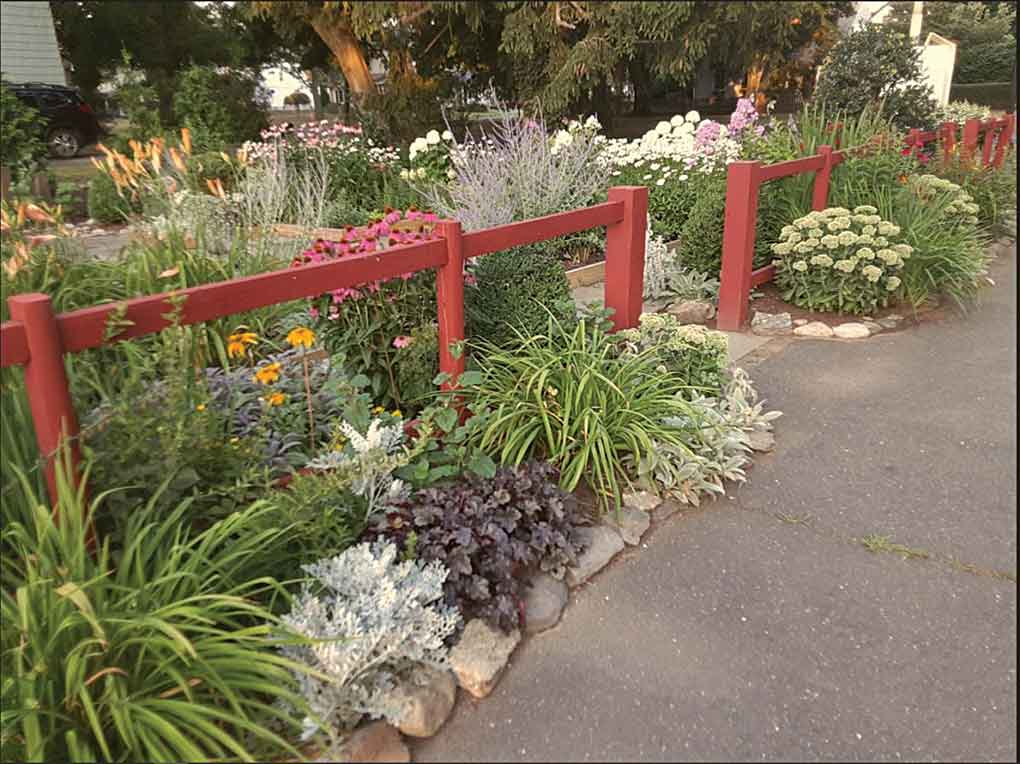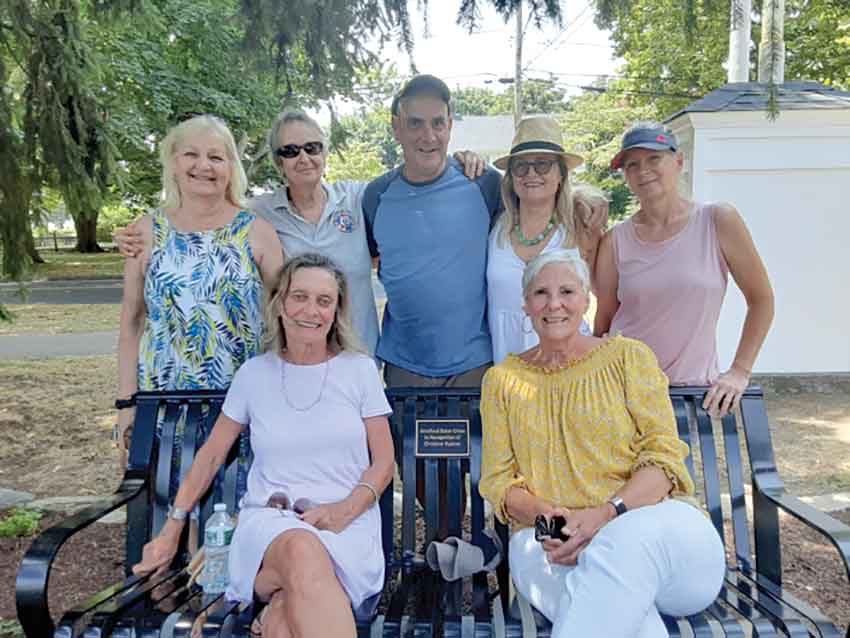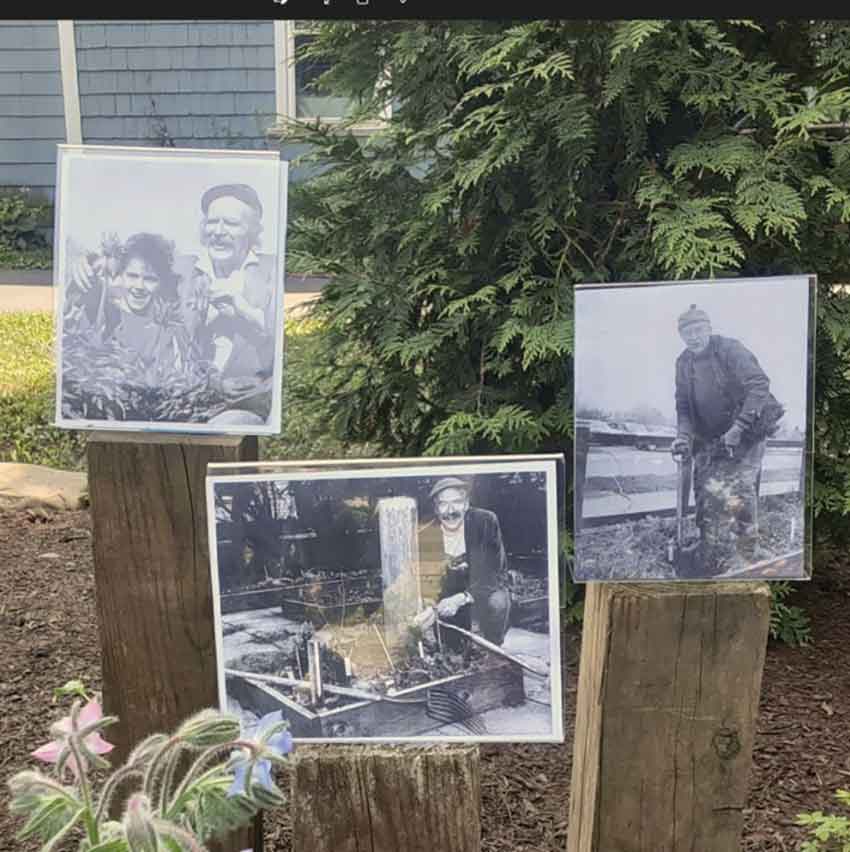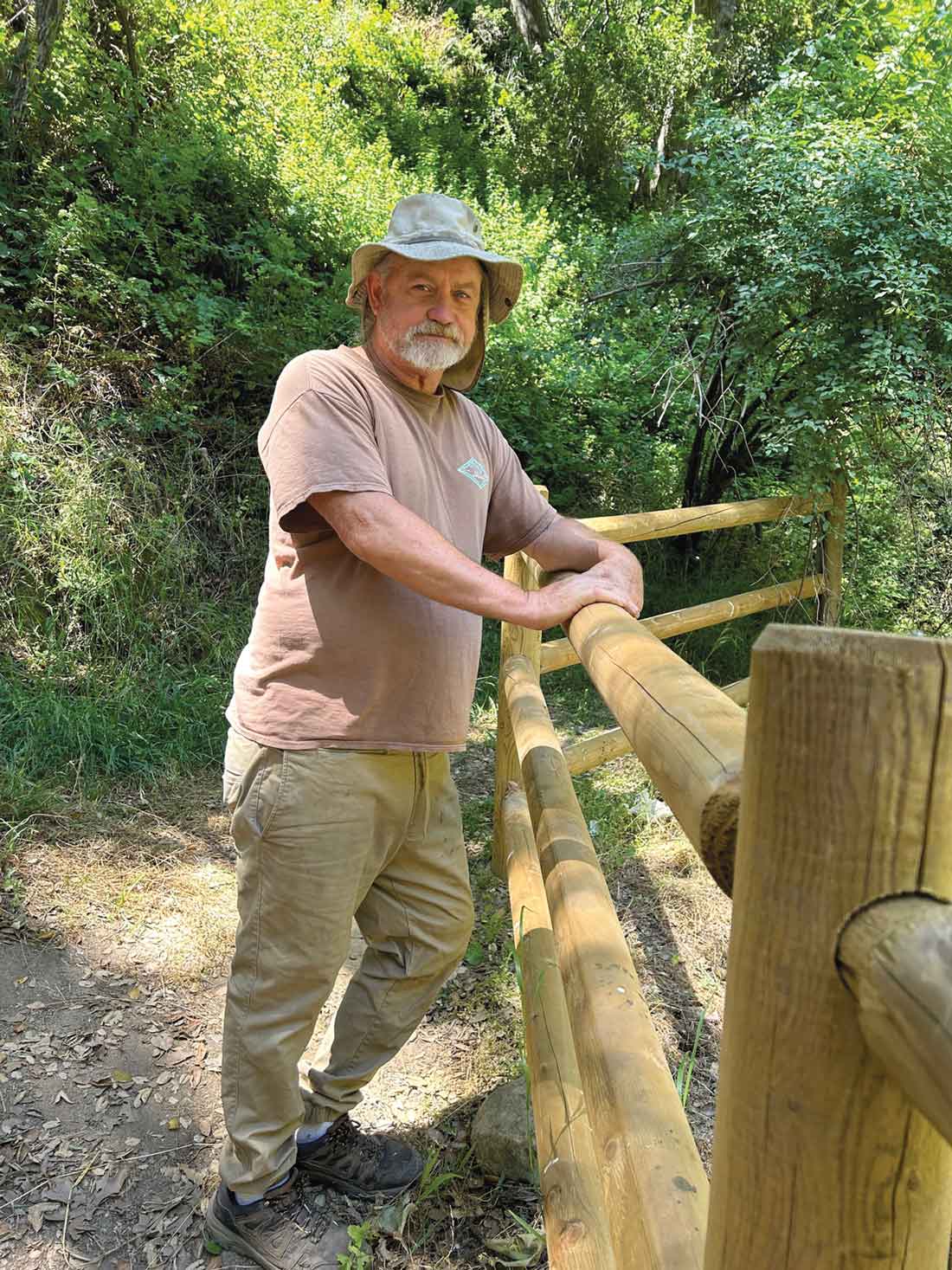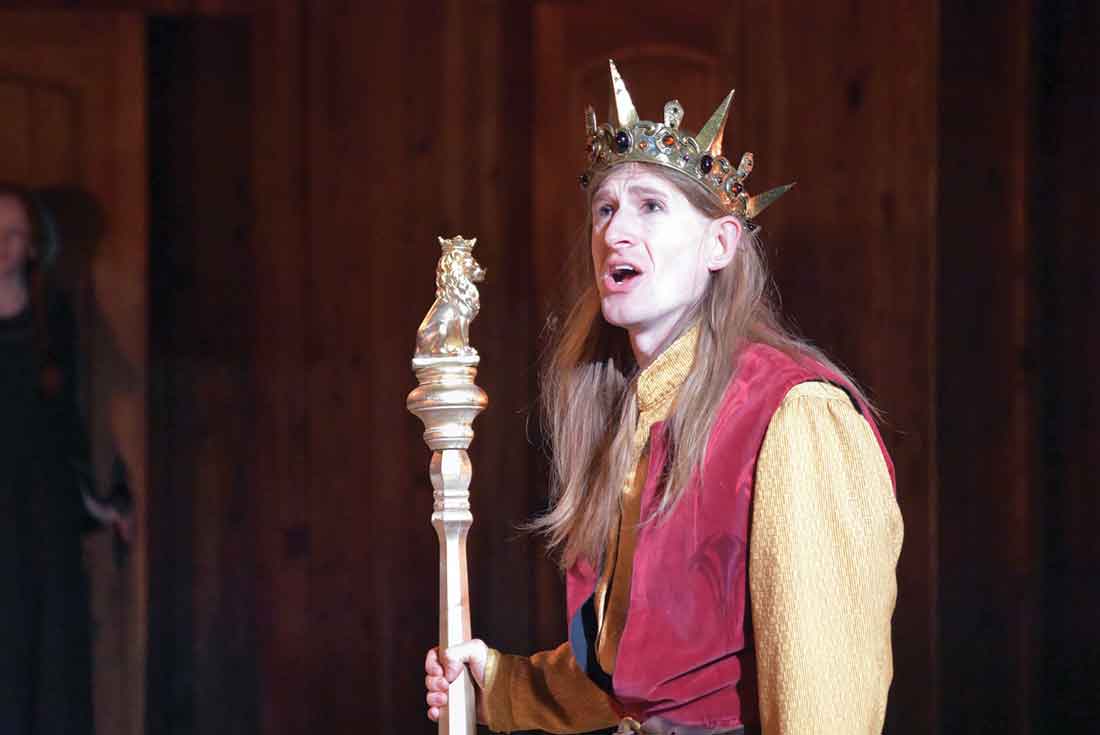The Story of a Magic Garden
July 29, 2022 | Reprinted with permission of the Stratford Crier
By Andrea Byrne, Editor
There is such a place, you know, and itâs here in Stratford, on Elm Street. Enter the grounds of Shakespeare Park at 1850 Elm Street, and to your right you will see one of the loveliest public gardens in the state. It is a garden with history and celebrity.
On July 19th a ceremony took place at the entrance to Shakespeare Park, paying tribute to Christine Rudney for all she has done in the last eleven years to bring the Shakespeare Garden back to life. Our Sister Cities group, part of an organization that connects all the Stratfords of the world, sponsored a bench for the garden with the inscription:
âStratford Sister Cities
In Recognition of Christine Rudney,â
Christine was clearly touched, and gave her thanks to those who have participated in so many ways over the last decade. She also gave us the origin story of the garden.
When the American Shakespeare Theatre was in its heyday in the 1950s, an actor named Will Geer performed there. He later became well known as Grandpa Walton on the popular TV show, âThe Waltons,â What is less known about him is that he started out to become a botanist, and received his Masterâs degree in botany at the University of Chicago.
He was well-versed in the many plants that make an appearance in Shakespeareâs plays. He couldâand didâquote the lines with ease. It was that passion that led him to create the herbarium at the propertyâs entrance. He preferred the term herbarium because many of the plants in Shakespeareâs day were favored for purposes in addition to their beautyâfood, medicines⌠and poisons. (See list below.) They were not the hybrid forms we are familiar with, but much smaller and less showy versions that today would likely be thought of as wildflowers or weeds. For example, what Shakespeare referred to as a pansy was actually the much smaller Johnny-Jump-Up or Viola. Our pansies are hybrids that were cultivated in the 19th century.
Geerâs initial plan was a small Perdita spring garden, named for a character in A Winterâs Tale. He envisioned it along the walk leading to the theatre and something that would be enjoyable and educational for the many school children who came to see performances.
Funds for a larger garden came from the Fairfield County Garden Guild (a little bit of magic!), and the initial labor came from Will Geer. He had a vacation home at 3000 Nichols Avenue called Geer-Gore Gardens that he visited often throughout the years. That garden provided some of the plantings for his new undertaking, which he named Shakespeareâs Herbal.
The basic layout remains the same, and is traditional for Shakespeare gardens, featuring boxwoods at the gate and pathways to guide you through the plantings. The boxwoods that Will Geer planted were a cutting from a tree outside Anne Hathawayâs cottage in Stratford-Upon-Avon, given to him by a lady doctor who had visited the cottage.
As one garden story goes, there was a rather prominent actress working at the theatre (initials KH⌠any guesses??) who was in the habit of plucking lettuce from the garden for her salads. When Will chided her for it, she tossed him twenty dollars, saying âgo buy some more lettuce.â He didnât. Instead he bought a crabapple tree, planted it just outside the garden and good-naturedly named it after her. She responded with equal good humor, but I wouldnât be surprised if she kept on picking lettuce.
Geer was with the theatre company for ten years, but left in 1965 to pursue work in California. In his absence, someone always magically stepped in. Sometimes it was actors and sometimes members of the Garden Guild, but Will returned often to look in on the garden and do his part in maintaining it.
Wyman Pendleton, a fellow actor and garden enthusiast, shared care of the garden while he was a member of the acting company through the â70s, working together with Will in the herbarium or writing each other with what new plantings or changes were being made. When the theatre fell on hard times and was forced to close altogether in the â80s, the garden fell into disrepair as well. Guild members tried to maintain it for a while, but that, too, faded away.
Some thirty years later, around 2011, Christine entered the scene to provide a bit more magicâand a great deal of work. Christine grew up in Stratford and worked at the theatre in her teens, so it has a very special place in her heart. She lived its history.
Her marriage and career as a nurse had taken her to New York City where she lived for many years, raising her family. She returned to her childhood home in the historic district when her father was ill, and it was then that she joined others who were hopeful of rejuvenating the theatre. She grew frustrated with all the failed attempts at restoring and restarting the theatre, so decided to take on a project where she could actually make something happenâthe garden. By that time it was a mess, with an overgrown pear tree at the center of it. She consulted an arborist about pruning the tree so she could renew the garden. He responded, âYou can have a tree here, or you can have a garden, but you canât have both.â The tree was removed. Sadly, somewhere in those intervening years the boxwoods from Anne Hathawayâs cottage had been removed, too.
Christine set to work. Theatre-enthusiast and former Councilman Matt Catalano put her in touch with two women studying to be professional gardeners. Jane Weimar and Delores Luciano needed hours to fulfill requirements for their licensing as Master Gardeners, and were happy to spend those hours working at the Shakespeare garden. Jane made contact with Will Geerâs daughter, Ellen, to let her know his garden was being revived. She was delighted and offered whatever support she could provide.
From this fresh start, Christine spearheaded all the subsequent activity, as well as being the dedicated worker, waterer and plant provider. But she feels the magic of this garden is the way it brings people together. âSomeone always shows up,â she says. âSomeone always steps in to help, just when you need it.â
People donate not only time and expertise, but plants either from their own gardens or purchased just for this one. Friend and neighbor Orna Rawls has taken an important role as âkeeper of the birdbath,â daily making sure the water is clean and fresh. The town has also contributed by providing some plantings, and assistance with the heavy labor.
Two more magic-makers showed up a couple of years ago, Anne Lees, a Master Gardener and Landscape Designer, and Jean Goodnow. Anne is a professional gardener and Jean maintains the Sister Cities Friendship Garden at Boothe Park. She has also sought out donors of goods and services, as well as financial gifts for the Shakespeare garden.
Christine still actively takes a part in the garden, but has handed over the trowel to Anne and Jean. Their know-how and energy are providing the next generation of plantings and design of Shakespeareâs Herbarium.
Above: Garden Gate
Right: Christine Rudney Bench With: Left to right, standing: Jaqueline Partridge, Orna Rawls, Christopher Aurelia, Anne Lees, Deb Perssons Left to right seated: Christine Rudney, Jean Goodnow.





